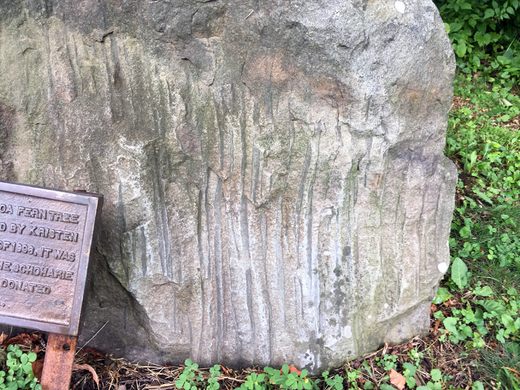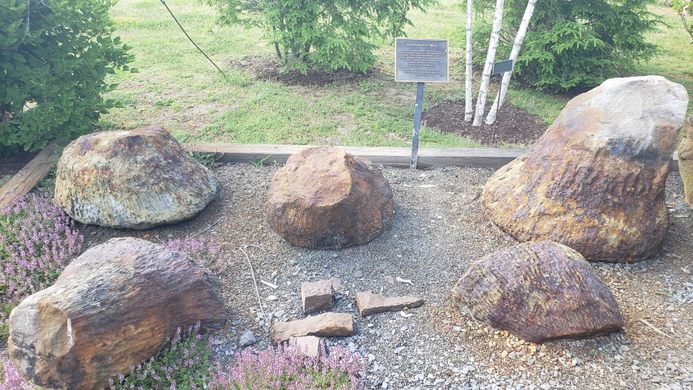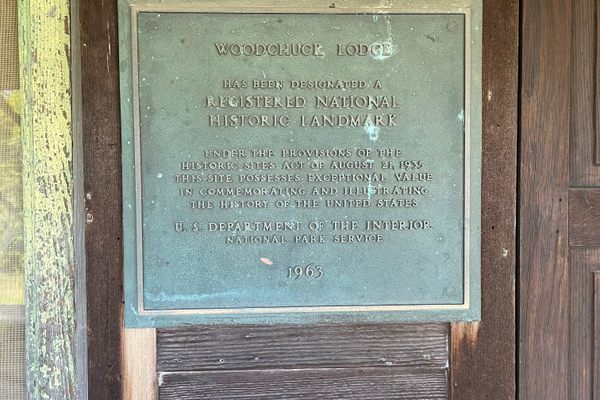AO Edited
Gilboa Fossils
This Catskills museum preserves stumps from the earliest known fossil forest on Earth.
In the Devonian period, the land that would eventually become the Catskill Mountains of New York was a low, swampy region bordering an ancient sea. Some of the first land plants large enough to properly be called “trees” grew in this swamp, and today their fossilized stumps can still be found in the small town of Gilboa, New York.
The Gilboa stumps represent one of the oldest known forests in the world. When these trees lived, hundreds of millions of years ago, most other land plants were low-growing ground covers similar to mosses and liverworts. Land animals consisted mainly of spiders, centipedes, and other arthropods. Studies of the Gilboa fossils have given scientists a better understanding of the evolution of forest communities.
Residents of Gilboa have probably been aware of these fossils ever since the town was founded, but the prehistoric plants were first brought to the attention of the scientific community after a devastating flood in 1869. Workmen quarrying black shale along the Schoharie Creek to repair washed-out roads and bridges discovered dozens of conical stone stumps and reported their finds to the New York State Museum of Natural History in Albany. Researchers from the museum subsequently gave the fossils the scientific name Eospermatopteris.
More stumps were unearthed in 1920 when Schoharie Creek was dammed and the town of Gilboa bought up and flooded to create a reservoir for Manhattan (a still-controversial event that caused much consternation among the townspeople who were forced to to uproot and move their homes and livelihoods). During construction of the dam, Eospermatopteris stumps were found in abundance. Several were shipped to other museums around the world by the company in charge of the construction project, which caused further controversy since the stumps legally belonged to the state of New York.
In 1921, the paleontologist and state geologist Winifred Goldring undertook an extensive study of the Gilboa fossils, detailing their biology and ecology. She also supervised the construction of a large diorama and exhibit about the Eospermatopteris trees at the New York State Museum of Natural History, which proved to be a major draw for visitors until it was taken down in the 1970s.
Then in 2010, repairs to the dam unearthed an entire fossilized forest floor that included even more Eospermatopteris stumps, along with other fossilized plants. Branches and stems of Eospermatopteris have also been discovered in recent years, showing that they looked similar to modern-day tree-ferns. These plants, though, were part of the extinct cladoxylopsid group and were only distantly related to modern ferns. Though the fossil stumps are still generally called Eospermatopteris, the entire extinct plant—stump, branches, and leaves—is officially named Wattieza.
Today, the Gilboa Museum and Juried History Center tells the story of the discovery of Eospermatopteris. It also preserves fossils from other Devonian plants, along with fossils of animals that lived in the ancient sea bordering this dawn forest. The museum also showcases artifacts and records from the now-lost village of Gilboa, along with other items from Catskills life.
Know Before You Go
Beyond the museum, several Eospermatopteris stumps are displayed at an outdoor exhibit about a mile down the road at a pull-off near the junction of 990V and Flat Creek Road, right next to the post office.























Follow us on Twitter to get the latest on the world's hidden wonders.
Like us on Facebook to get the latest on the world's hidden wonders.
Follow us on Twitter Like us on Facebook